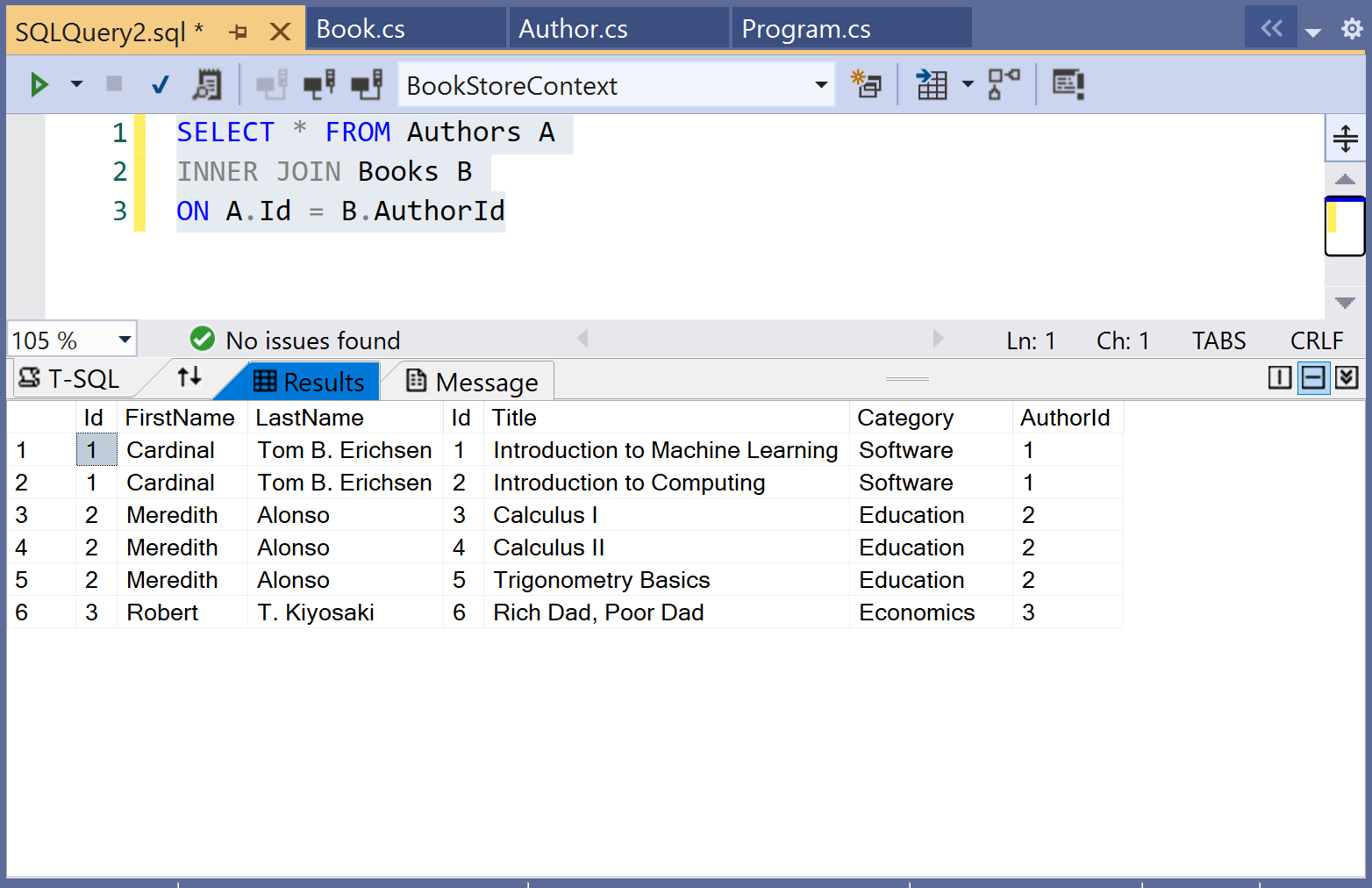Dapper Multi Mapping
In Dapper, multi-mapping is a useful feature that you can use when you have a one-to-one or one-to-many relationship between objects, and you want to load all objects with a single query eagerly.
- As you know that we have a one-to-many relationship between an
Authorand itsBook. - Instead of having to do two select statements, one for the
Authorsand one for theBooksas we have used previously, we can also use one simple SQL Statement.
Let's have a look into the following SQL query which is a straightforward SQL query using INNER JOIN which is joining the authors and the books on the AuthorId field.
SELECT * FROM Authors A
INNER JOIN Books B
ON A.Id = B.AuthorId
When you execute the above query, you will see all their information, such as FirstName, LastName, Title, Category, etc.

This is a typical result of an SQL INNER JOIN. Now let's see how we can incorporate this into the C#.
private static void GetAuthorWithBooks()
{
string sql = "SELECT * FROM Authors A INNER JOIN Books B ON A.Id = B.AuthorId";
using (IDbConnection db = new SqlConnection(ConnectionString))
{
var authorDictionary = new Dictionary<int, Author>();
var authors = db.Query<Author, Book, Author>(
sql,
(author, book) =>
{
Author authorEntry;
if (!authorDictionary.TryGetValue(author.Id, out authorEntry))
{
authorEntry = author;
authorEntry.Books = new List<Book>();
authorDictionary.Add(authorEntry.Id, authorEntry);
}
authorEntry.Books.Add(book);
return authorEntry;
},
splitOn: "Id")
.Distinct()
.ToList();
foreach (var author in authors)
{
Console.WriteLine(author.FirstName + " " + author.LastName);
foreach (var book in author.Books)
{
Console.WriteLine("\t Title: {0} \t Category: {1}", book.Title, book.Category);
}
}
}
}
In the Query method, you can see that there are three generic types.
- The first type represents the first object that you're mapping to, and that is
Author. - The second type, in this case
Book, represents the child object. - The third type represents the return type, which happens to be
Authoragain, which makes sense becauseAuthoris the parent.
The temporary dictionary will store Id along with the author entity. Then inside the lambda, it will check to see if we have already seen this author or not.
Now call the GetAuthorAndTheirBooks method in the Main method.
static void Main(string[] args)
{
GetAuthorWithBooks();
}
Let's execute the above code, and you will see the following output.
Cardinal Tom B. Erichsen
Title: Introduction to Machine Learning Category: Software
Title: Introduction to Computing Category: Software
Meredith Alonso
Title: Calculus I Category: Education
Title: Calculus II Category: Education
Title: Trigonometry Basics Category: Education
Robert T. Kiyosaki
Title: Rich Dad, Poor Dad Category: Economics
